Advertisement
Grab your lab coat. Let's get started
Welcome!
Welcome!
Create an account below to get 6 C&EN articles per month, receive newsletters and more - all free.
It seems this is your first time logging in online. Please enter the following information to continue.
As an ACS member you automatically get access to this site. All we need is few more details to create your reading experience.
Not you? Sign in with a different account.
Not you? Sign in with a different account.
ERROR 1
ERROR 1
ERROR 2
ERROR 2
ERROR 2
ERROR 2
ERROR 2
Password and Confirm password must match.
If you have an ACS member number, please enter it here so we can link this account to your membership. (optional)
ERROR 2
ACS values your privacy. By submitting your information, you are gaining access to C&EN and subscribing to our weekly newsletter. We use the information you provide to make your reading experience better, and we will never sell your data to third party members.
People
Movers And Shakers
LGBTQ+ chemists you should know about
These historic scientists influenced agriculture, 3D printing, inorganic chemistry, and more
by Katherine Bourzac , Payal Dhar, special to C&EN , Giuliana Viglione, special to C&EN , Neil Savage, special to C&EN
June 7, 2021
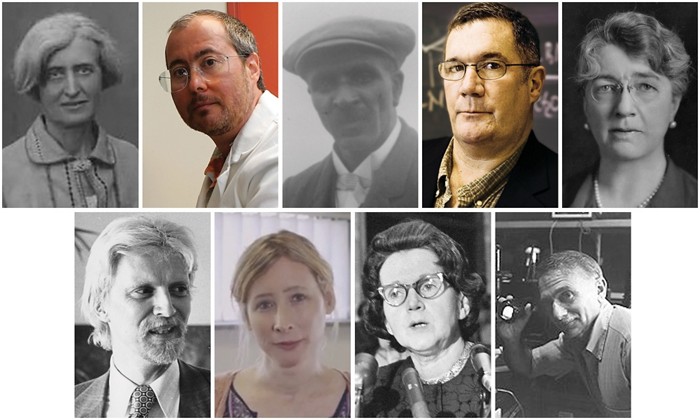
To celebrate Pride Month—and to play our part in filling gaps in the historical record—C&EN has gathered this preliminary list of trailblazing LGBTQ+ chemists from history and a few we lost more recently. This list of innovative scientists highlights the long-standing contributions of LGBTQ+ chemists, many of whom you won’t find in textbooks.
Some of the scientists we celebrate here, like Bruce Voeller, were out in their lifetimes. In addition to making scientific contributions, these trailblazers had a tremendous impact on the people they worked with and as activists. They mentored and inspired LGBTQ+ students, helped reframe how the public perceived AIDS, and challenged their colleagues’ gender biases.
Others could not be out because of workplace discrimination and physical danger. Before the civil rights movement emblematized by the 1969 Stonewall Uprising—which Pride Month commemorates to this day—people were arrested, beaten up, outed in local newspapers, and fired for going to gay bars in the US. It was not until 2020 that the US Supreme Court extended to LGBTQ+ people a federal law prohibiting employment discrimination. Today, about 80 countries criminalize same-sex relationships, and many others have laws that deny full civil rights to or actively discriminate against LGBTQ+ people. Since 2020, 100 bills targeting the rights of transgender people, including children, have been introduced in US state legislatures. And laws are only one measure of acceptance. The need for people to hide their identities makes it challenging to compile stories like the ones here.
“In the past, a lot of people hid who they were, and we may never know they were there,” says Paulette Vincent-Ruz, a chemistry education researcher at the University of Michigan. She also points out all the potential scientific talent lost to the AIDS epidemic. “We literally lost a generation of thinkers, artists, everything,” she says.
Another challenge when putting together LGBTQ+ histories is that the way we conceive of our identities is always changing; historical figures didn’t necessarily use the same language to describe themselves as we would today. For example, though we don’t know how George Washington Carver and Rachel Carson would have described their sexual orientations, both had close same-sex relationships, and historians and biographers have considered them among influential LGBTQ+ scientists. To make this list, C&EN relied on historical resources from organizations like GLAAD, independent research, and surveying our audience.
We’d love your help with filling in gaps in chemistry history, and we’ll keep updating this page. If you’d like to tell us about an influential historical or recently deceased LGBTQ+ chemistry hero, please complete the survey at cenm.ag/historiclgbtqsurvey.
Ben Barres
by Payal Dhar

Ben Barres, the first openly transgender member of the US National Academy of Sciences, is remembered not just for his groundbreaking work on glial cells in the brain but also as a champion for women in science.
Barres was born Sept. 13, 1954, in West Orange, New Jersey, and assigned female at birth. His interest in science developed while he was in school, but because he was perceived as a girl, he was discouraged from taking math and science courses. Despite this, he earned a place at the Massachusetts Institute of Technology and went on to Dartmouth Medical School for his medical degree.
In the early 1980s, while Barres was doing his neurology residency, glial cells in the brain caught his attention. Glial cells had previously been thought of simply as the brain’s biological glue, but Barres showed they play an active role in brain function. His work changed the way we understand the cells’ interactions with neurons.
Barres transitioned in his 40s and spoke openly about the sexism he had faced as a woman in science and how that changed after transitioning. Right after he transitioned, a colleague remarked about him, “His work is much better than his sister’s,” not realizing they were the same person.
He continued to advocate for women scientists and debunked the notion that innate ability lay behind their low numbers in scientific careers.
In 1993, Barres joined Stanford’s Department of Neurobiology, and in 2008, he became its chair. He published 167 peer-reviewed papers, won many awards, and served on numerous editorial boards. He died of pancreatic cancer in December 2017, aged 63.
Rachel Carson
by Payal Dhar

If inspiring the global environmental movement can be credited to one individual, that person is marine biologist Rachel Carson. Her work on how pesticides damage natural habitats had a lasting impact on government, industry, and society. A 1985 article in the EPA Journal calls the US Environmental Protection Agency “the extended shadow of Rachel Carson.” Her 1962 book, Silent Spring, on the detrimental effects of pesticides, significantly affected the way people think about the environmental impact of chemical use, and regulators subsequently banned many of the pesticides she wrote about in the book.
Born May 27, 1907, in Springdale, Pennsylvania, Carson was fascinated by the natural world from a young age. She won a scholarship to attend Pennsylvania College for Women and in 1929 was accepted to Johns Hopkins University’s zoology graduate program. Two years after earning her degree, Carson quit school to support her family. In 1935, she joined the US Bureau of Fisheries.
Around this time, she started writing about aquatic life, and she produced a trio of books: Under the Sea-Wind, The Sea around Us, and The Edge of the Sea.
But Carson is best known for penning Silent Spring, which raised public consciousness about pollution from uncontrolled use of chemicals in agriculture and industry. Carson advocated for government regulation of persistent pollutants, including DDT. She faced severe backlash from the chemical industry for her stand.
In 1953, Carson met Dorothy Freeman. Though they saw each other infrequently, they exchanged around 900 letters over 12 years. Carson destroyed most of these letters before her death. Those that remain, published decades later in a collection edited by Freeman’s granddaughter, allude to the romantic nature of the relationship.
Carson, who was diagnosed with breast cancer and had a respiratory illness late in life, died from a heart attack in 1964. In addition to numerous honors in her lifetime, she was a posthumous recipient of the Presidential Medal of Freedom.
George Washington Carver
by Giuliana Viglione
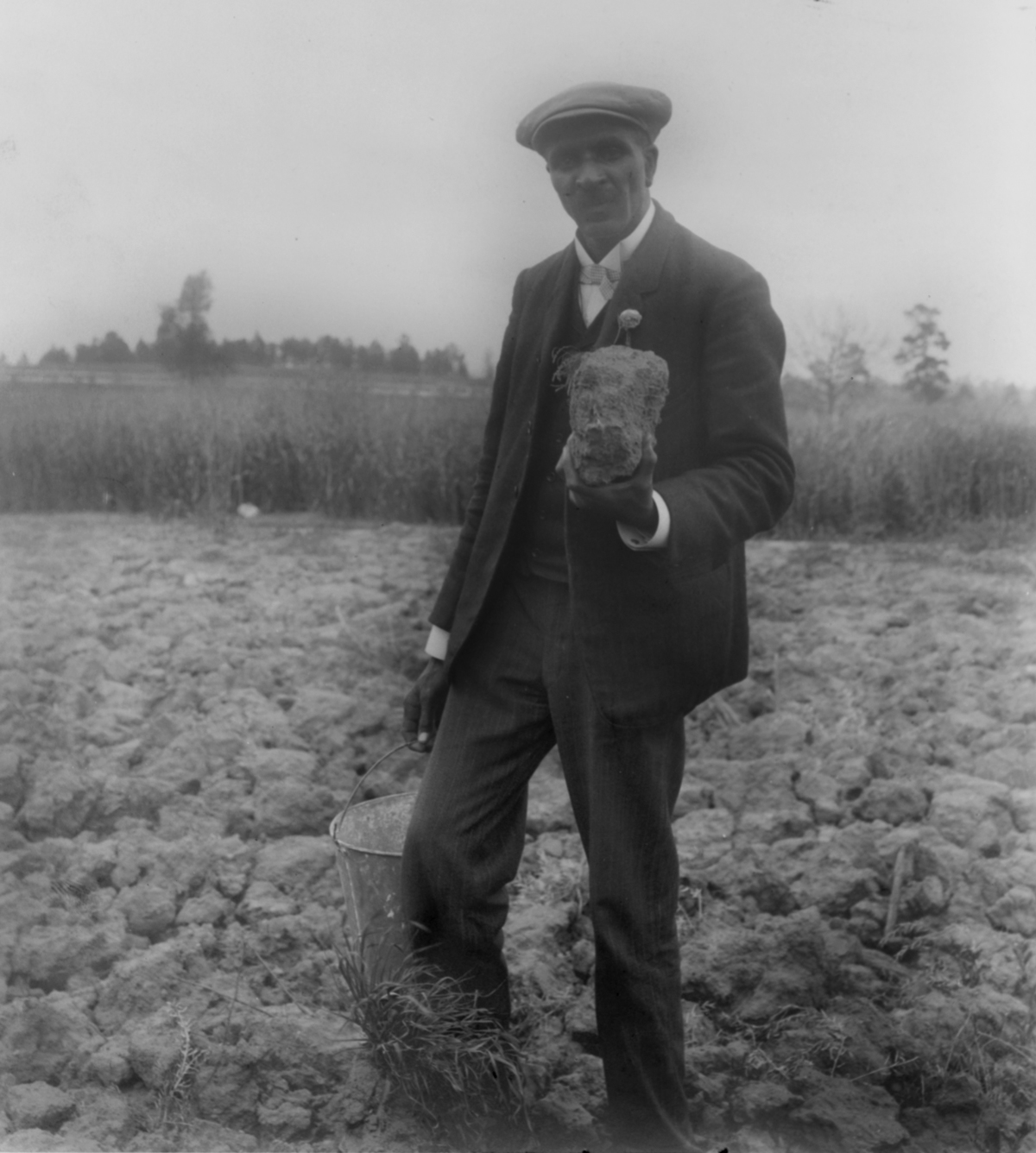
George Washington Carver’s work revolutionized agricultural science in the US. Born into slavery in Missouri in 1864, Carver showed an interest in botany at an early age. Although he initially enrolled in college to study the arts, he transferred to Iowa State College of Agriculture and Mechanic Arts in 1891 and was the first Black person in the US to earn a bachelor of science degree, in 1894. He stayed on in Iowa to complete his master’s degree before the Tuskegee Institute in Alabama hired him to head its Agriculture Department.
While at Tuskegee, Carver championed the use of crop rotation as a way to restore nutrient-depleted soils. In addition to his teaching and scientific studies, he traveled the countryside teaching farmers his soil restoration methods.
Carver was also a pioneer in the field of chemurgy, which aimed to find industrial uses for surplus crops using the power of chemistry. He found around 300 uses for the peanut, one of the crops he recommended be rotated with cotton plants. Carver’s work was named a National Historic Chemical Landmark by the American Chemical Society in 2005.
Carver never married, and his sexuality is a matter of ongoing—and often heated—debate. Historian Christina Vella, in her 2015 biography of Carver, scrutinized his relationships with his research associates and students at Tuskegee and concluded that he was likely bisexual. He had a close relationship with his research assistant Austin W. Curtis Jr. from 1935 until Carver’s death in 1943, and he granted Curtis one-quarter of the royalties from the sale of an authorized biography published in 1943.
Martin Gouterman
by Neil Savage
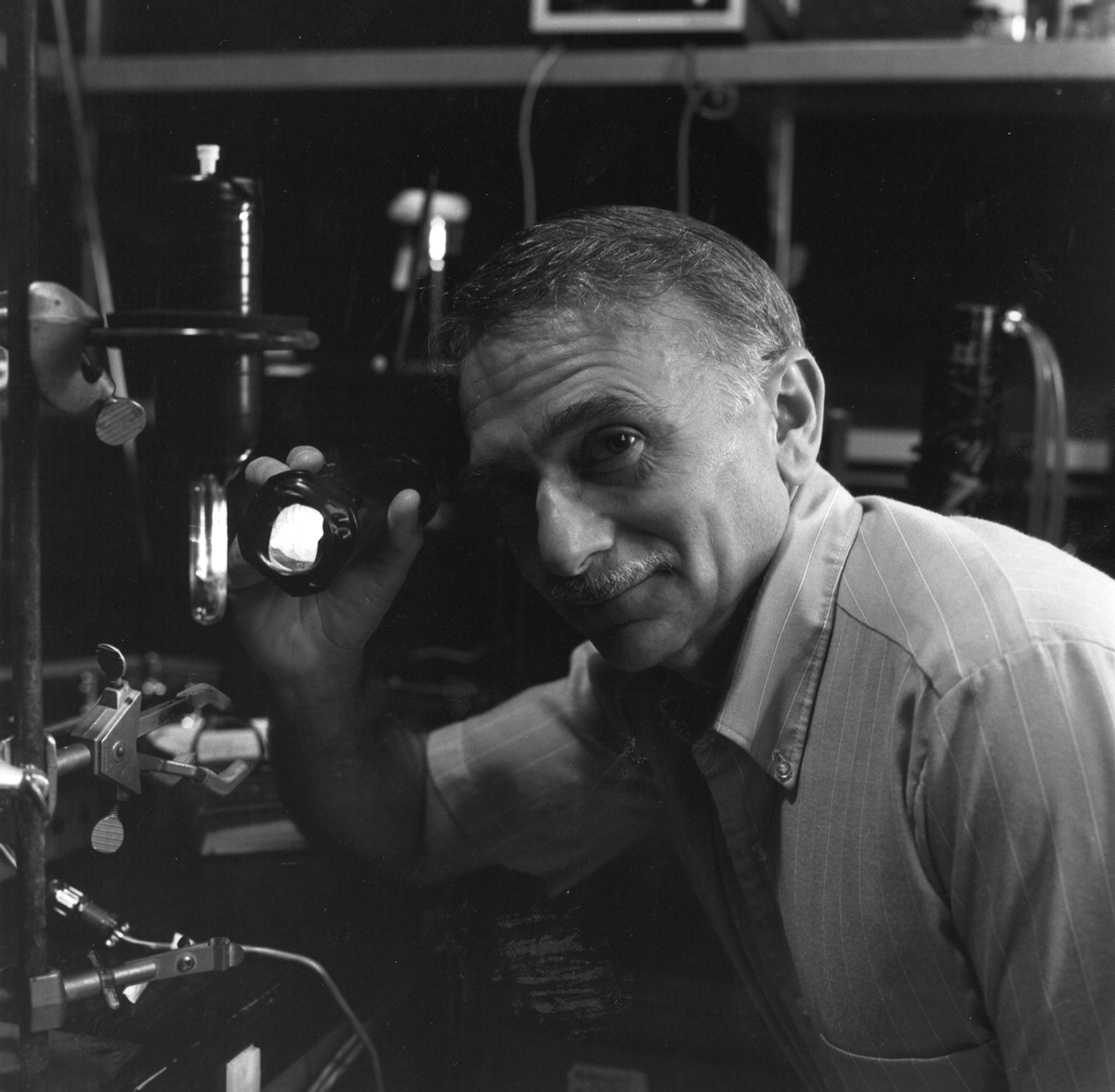
Martin Gouterman, an out gay man at a time when few scientists were open about their sexuality, discovered why blood is red and grass is green.
Gouterman was born on Dec. 26, 1931, and died Feb. 22, 2020, at 88. He was a University of Washington chemist who became an expert in porphyrins, large ring molecules consisting of four smaller rings formed by four carbons and a nitrogen. They’re essential to much of life, helping form both the red hemoglobin in blood and the green chlorophyll in plants. In 1963, Gouterman, then at Harvard University, and his colleagues developed a model of porphyrins’ physics to explain the molecules’ properties (J. Mol. Spectrosc. 1963, DOI: 10.1016/0022-2852(63)90011-0). His four-orbital model describes metallic porphyrins as having two highest occupied molecular orbitals that have nearly the same energy levels, or are “near-degenerate,” and two exactly degenerate lowest unoccupied molecular orbitals.
Closeted at Harvard and briefly married to DeLyle Eastwood, a scientist and one of his sometime coauthors, Gouterman blossomed when he moved to Seattle in 1966. There, he lived in the historically gay Capitol Hill neighborhood and helped found the Dorian Society, a pre-Stonewall rights group that sought to portray gay men and lesbians as respectable citizens. He also worked to end the war in Vietnam and joined Kadima/New Jewish Agenda and the International Jewish Peace Union, campaigning to end the 1967 Israeli occupation of the West Bank and the Gaza Strip. During the AIDS epidemic, he opened his home to young, sick gay men with nowhere else to go, and he later volunteered at Seattle’s Bailey-Boushay House, the nation’s first AIDS hospice.
In 1983, he helped a lesbian couple conceive a son, Mikaelin BlueSpruce, who, along with a granddaughter, survives him.
Gregory L. Hillhouse
by Neil Savage

Scientists long considered nitrenes, highly reactive molecules based on nitrogen, too difficult to use. It seemed impossible to isolate a stable nitrene based on late transition metals because those metals are so rich in electrons. Gregory L. Hillhouse, born March 1, 1955, showed he could make nitrenes with late transition metals, opening up new reactions for creating important organic molecules.
Hillhouse called his first such molecule, constructed in 2001, double nickel—a name that his colleagues at the University of Chicago also conferred on him (J. Am. Chem. Soc. 2001, DOI: 10.1021/ja010358a). His work won Hillhouse the ACS Award in Organometallic Chemistry in 2013.
He’d been fascinated by energy-rich nitrogen compounds since his PhD thesis at Indiana University Bloomington in 1980. After postdoctoral work at the California Institute of Technology, Hillhouse settled at the University of Chicago, where he is remembered not only as an innovative scientist but also as a warm friend to students and colleagues alike, a gourmet cook and collector of wines, a talented painter, and an organizer of intramural basketball and softball teams. His role as a mentor was so significant that the University of Chicago’s undergraduate chemistry society named its annual lecture in his honor.
Hillhouse took many years to come out as gay, afraid it might hurt his career, according to a remembrance in The Chemists Club, a University of Chicago publication. In the 1990s, shaken by a close friend’s death, he began volunteering at a Chicago AIDS hospice, where he prepared gourmet meals each weekend. He also became a role model for younger LGBTQ+ chemists. “While I wasn’t out in college, Greg helped me feel OK being myself and feel comfortable being out in the chemistry community now,” says Matthew Joannou, who took Hillhouse’s class as a University of Chicago undergraduate.
Hillhouse died of pancreatic cancer in 2014 at age 59.
Louise Pearce
by Payal Dhar
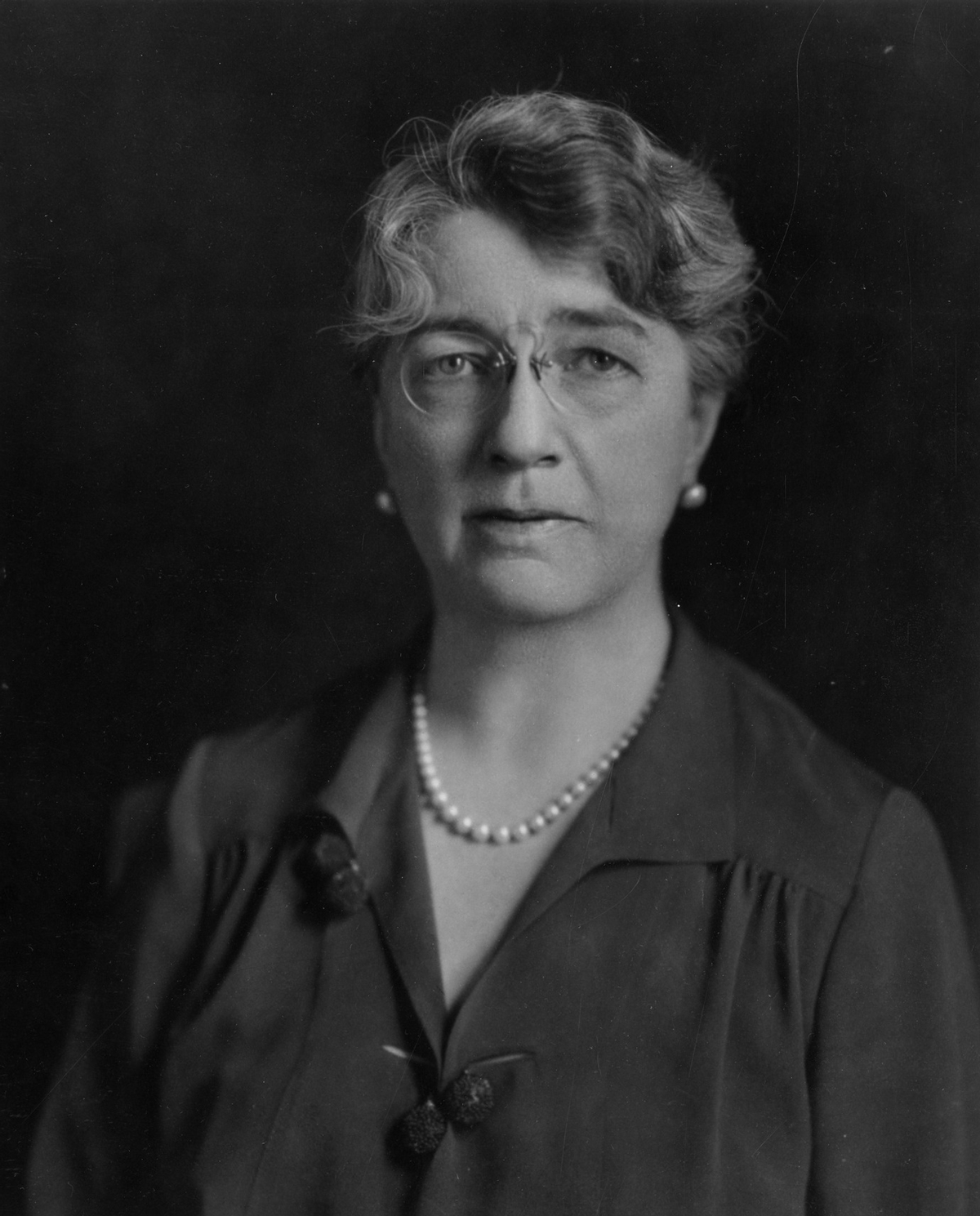
Louise Pearce was an adventurous scientist whose work contributed to a cure for the painful and deadly African sleeping sickness (trypanosomiasis).
Born March 5, 1885, in Winchester, Massachusetts, she earned degrees from Stanford University and Boston University and studied medicine at Johns Hopkins University. In 1913, she became the first woman researcher to be appointed to the Rockefeller Institute (now Rockefeller University), where she worked with four other scientists to develop arsenic-based compounds to treat trypanosomiasis.
Six years later, Pearce and her colleague Wade Hampton Brown landed on a drug called tryparsamide, which showed promising results in animal models. Pearce traveled to the Belgian Congo (now Democratic Republic of the Congo) to conduct human trials and found that the drug cured 80% of patients. Tryparsamide remained the standard treatment for the disease until the 1960s.
After her successful Congo mission, Pearce was promoted to associate member of the Rockefeller Institute and received the Belgian Order of the Crown. She went on to win many other awards and honors—although the institute never conferred the status of a full member to her. Pearce’s subsequent research focused on developing animal models for the study of human cancers. She also studied the role of viruses in spreading cancer.
Pearce was a member of Heterodoxy, a feminist club for "unorthodox" women, including many lesbian and bisexual women; fellow scientist Sara Josephine Baker and author Ida A. R. Wylie were members as well. The three women lived together in New Jersey, where Pearce died in 1959.
Jemma Redmond
by Giuliana Viglione
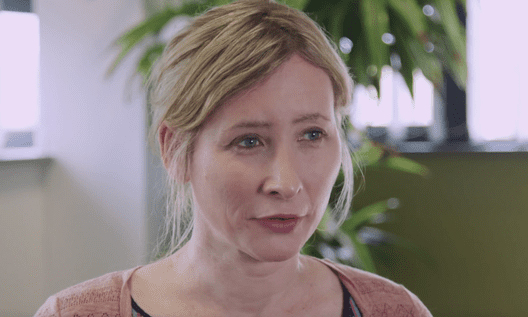
As a child, Jemma Redmond loved to take things apart and put them back together again, trying to improve on the design as she did so. Born in 1978 in Tallaght, a Dublin suburb, Redmond studied electronic engineering before earning her undergraduate degree in applied physics at Robert Gordon University. She then went on to complete a master’s degree in nanobioscience from University College Dublin in 2012. She began making her first bioprinters at her kitchen table, and her master’s thesis focused on 3D printing finger bones from mouse-derived bone cells.
Redmond was intersex and infertile, and part of her interest in biological 3D printing stemmed from a desire to print herself working reproductive organs. She cofounded a 3D-printing start-up called Ourobotics in 2015. Her work caught the eyes of several venture capital firms, as well as a start-up incubator in Cork, Ireland.
Redmond served as Ourobotics’ CEO, and under her leadership, the company developed the first 3D printer capable of using 10 different biomaterials at once. She was also a firm advocate for affordable and open science, and Ourobotics’ second 3D printer was entirely open source—and an order of magnitude cheaper than the first design. Her hope was that one day, every hospital and university in the world would have a bioprinter on-site that could print new organs for patients on the transplant list. She also envisioned melding the biological and the technological, such as by implanting sensors in organs to monitor health.
Redmond died in 2016 at age 38. She was survived by her partner, Kay Cairns, a journalist and activist.
Nina Vedeneyeva
by Giuliana Viglione

Born in 1882 in Tbilisi, Georgia (then part of the Russian Empire), Nina Vedeneyeva was a preeminent crystallographer. Her accolades include the Stalin Prize, the Order of Lenin, and several other medals awarded by the Soviet Union.
Vedeneyeva began her studies at the Liège Polytechnical School in Belgium but returned to Russia after only 1 year. After graduating from the chemistry department of the Bestuzhev Courses, a top women’s university, in 1913, she began to teach at the Second State University and the Institute of Fine Chemical Technology, both in Moscow.
She married a man, whom she later divorced, and later in life, she fell in love with the famed Russian lesbian poet Sophia Parnok. Over the course of their relationship, which lasted until Parnok’s death in 1933, Parnok wrote 32 poems inspired by Vedeneyeva.
Vedeneyeva earned her doctorate in physics and mathematics in 1937 and was hired to head the Optical Sector of the Institute of Geological Sciences in 1941. There, she worked on problems of camouflage for the Red Army and developed a method of analyzing optical properties of materials while in the field.
In 1945, Vedeneyeva founded the Laboratory of Crystal Optics at the Institute of Crystallography, part of the USSR Academy of Sciences; she headed the laboratory until her death in 1955. Among other contributions, her research proved that the coloration of different types of quartz is due to lattice defects.
Bruce Voeller
by Giuliana Viglione
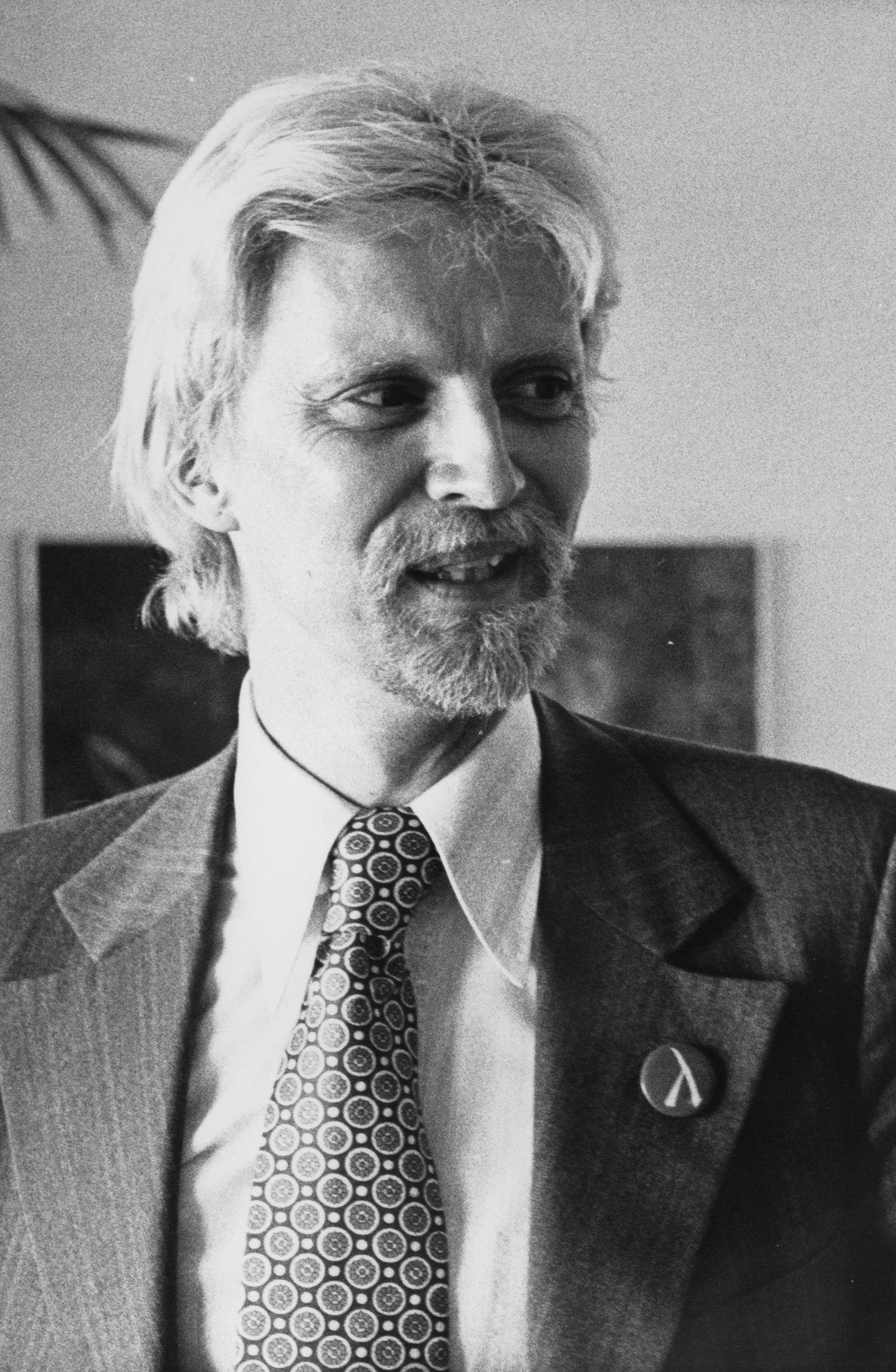
A prominent figure in the struggle against the AIDS epidemic, Bruce Voeller was a scientist and activist whose work helped prevent transmission of HIV and advance gay rights. In fact, he coined the term acquired immunodeficiency syndrome (AIDS) as a replacement for the inaccurate and stigmatizing moniker gay-related immune deficiency disorder.
Voeller was born in 1934 in Minneapolis and grew up in the small town of Roseburg, Oregon. He excelled in his undergraduate studies at Reed College and earned his PhD in developmental biology, biochemistry, and genetics from Rockefeller University in 1961. After graduating, he stayed on as a research associate at Rockefeller. According to an obituary published at the time of his death in the Journal of Sex Research, Voeller was the youngest person to be promoted to associate professor at the university.
However, he paused his research career in order to focus on campaigning for gay rights. Voeller cofounded the National Gay Task Force in 1973 and served as its executive director until 1978.
In the late 1970s, Voeller cofounded the Mariposa Education and Research Foundation, which studied sexuality and sexually transmitted infections. As the AIDS epidemic raged across the US in the 1980s, Voeller and the Mariposa Foundation were at the forefront of research on preventing transmission of the virus later identified as HIV. He was one of the authors of a 1985 study in the Lancet showing that a popular spermicide, nonoxynol-9, could inactivate HIV (Lancet 1985, DOI: 10.1016/s0140-6736(85)92584-x).
Voeller died in 1994 of an AIDS-related illness. In 2019, he was one of the 50 inaugural people memorialized on the US’s National LGBTQ Wall of Honor.
Walter Westman
Neil Savage, special to C&EN
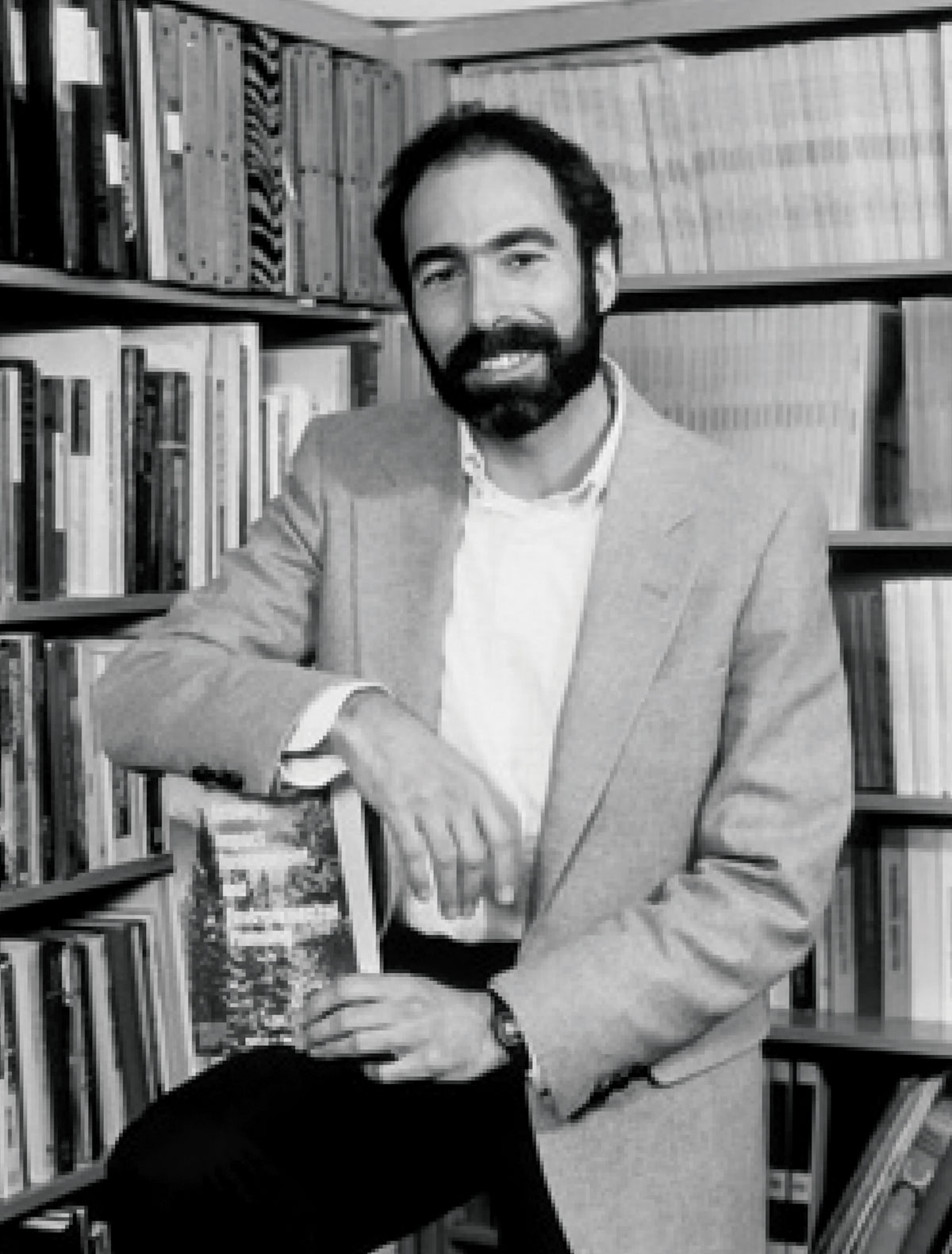
Walter Westman made an impact on both ecology and public policy, helping write environmental legislation and working to combat homophobia in the sciences.
Westman, who was born in New York City on Nov. 5, 1945, studied botany and ecology in the US and in Australia. For his PhD work at Cornell University, which he completed in 1971, he studied an unusual ecosystem of stunted trees thriving in poor soils in Northern California. During a fellowship with the US Congress, Westman helped write amendments to the Federal Water Pollution Control Act, which became the Clean Water Act in 1972.
Then he returned to academia, moving to the University of California, Los Angeles, in 1975. His work as a professor of geography was wide ranging, encompassing biogeography, the effects of fire and air pollution on vegetation, and the use of remote sensing to study ecosystems. In 1984, he moved to Lawrence Berkeley National Laboratory, where he could be close to San Francisco’s burgeoning gay community.
Though he’d been open about his sexuality for some time, Westman’s professional coming out was at the 1980 meeting of the American Association for the Advancement of Science. He organized a special session at the conference about homophobia in the scientific workplace and how it affected researchers as well as what science was being done. Another session he helped organize in 1985 addressed how homophobia was affecting AIDS research.
Also at that 1980 meeting, he founded the National Organization of Gay and Lesbian Scientists, now called Out to Innovate. He was on the group’s board of directors until 1988, when he resigned to focus on AIDS activism. He joined Project Inform, an advocacy group empowering people with HIV and hepatitis C, and remained active with the organization until his death from AIDS on Jan. 3, 1991, at age 45.
Correction
The vignette about Martin Gouterman was updated on June 7, 2021, to correct the DOI. The correct DOI is 10.1016/0022-2852(63)90011-0. The initial 1 was originally missing.
This article was updated on March 23, 2022, to correct the description of Heterodoxy in Louise Pearce’s profile. Heterodoxy was a club for “unorthodox” women and included many lesbian and bisexual women; it was not a club just for lesbian and bisexual women.
UPDATE
This article was updated on March 23, 2022, to clarify that Ben Barres was perceived as a girl; he didn’t choose to “present as” one. Jemma Redmond’s profile was also updated to avoid implying that she knew she was intersex from a young age and to add that she was survived by her partner, Kay Cairns.
UPDATE
This article was updated on March 31, 2022, to include the profile of Walter Westman.





Join the conversation
Contact the reporter
Submit a Letter to the Editor for publication
Engage with us on Twitter